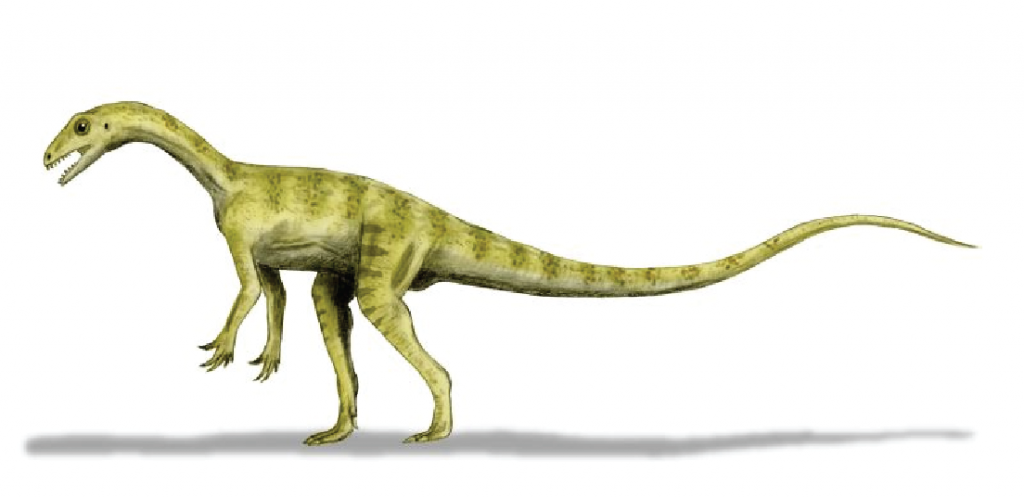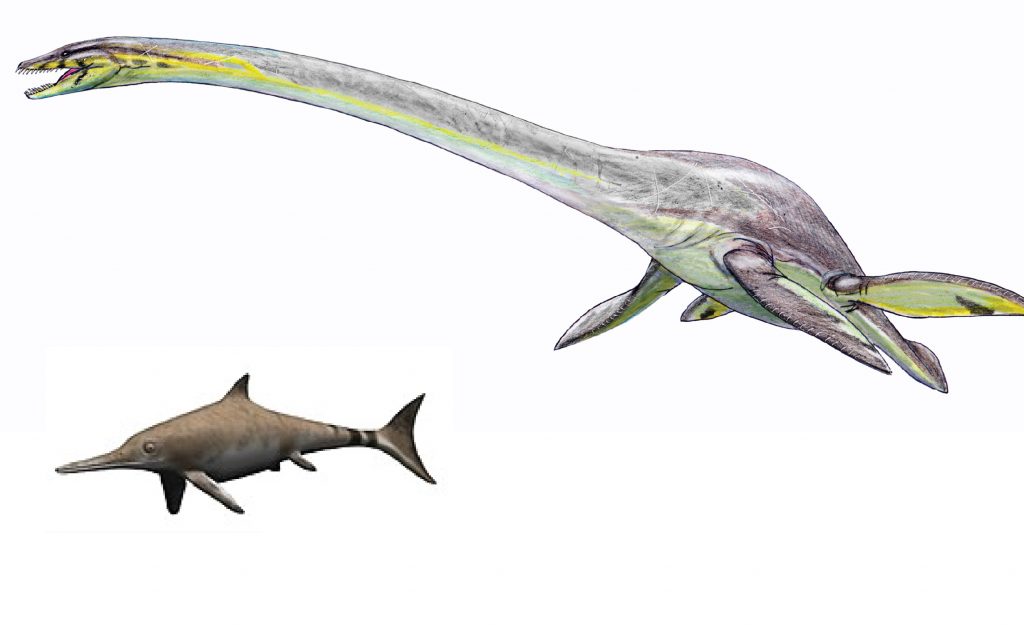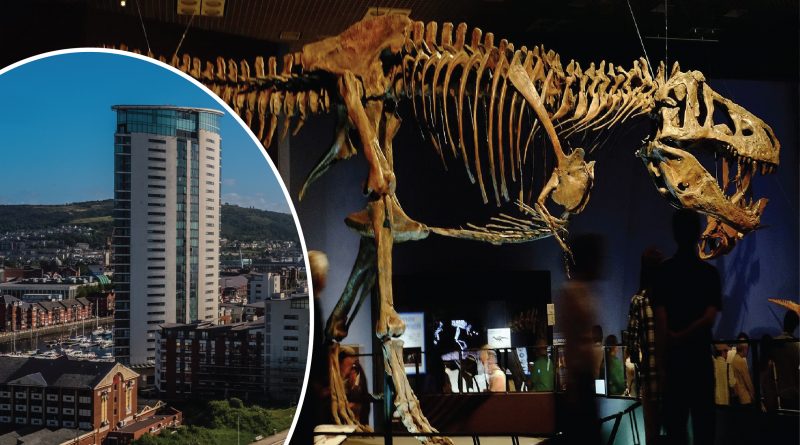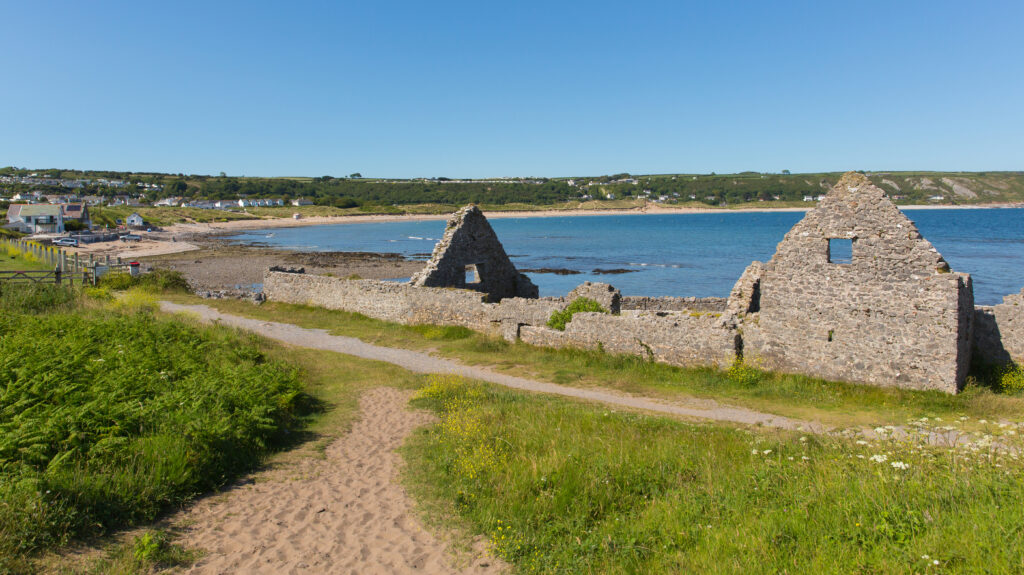What are the odds of finding dinosaur bones in your garden in Swansea?
We are fascinated with Dinosaurs. Everyone is. We can’t help it. And in Swansea, we are the same as everywhere else. But have you ever thought about whether there could be dinosaur bones in your garden?
The good news is that there have been numerous Dinosaurs found in Wales. There is even a Dinosaur named after a Welsh quarry and another named after Welsh brothers.

Pantydraco; First Welsh dinosaur
In 1952 Kermack and Robinson found some Dinosaur bones in a quarry near Bonvilston, about 20 miles East of Port Talbot. The Quarries name was Pant-y-ffynon. Meaning the hollow of the spring or well in Welsh.
Initially, it was believed that these bones belonged to a Thecodontosaurus. However, they have since been detected as a new species of dinosaur. A dinosaur which required a name. The new species took the ‘Pant’ from the quarry and ‘draco’ as dragon.
Pantydraco was of moderate build. The bones discovered are believed to have been junior. It is thought that its height would have been between 0.7 meters and 1 meter. Adults would have been around 3 meters long and about 50Kg (7 ½ stone). Meaning they were fairly slim and probably fast and nimble.
The creature had a long tail that tapered towards the end and was broad at the hip joint. It had a pointed head with a strong jaw. The forelimbs of the dinosaur were developed for grasping while the hindlimbs were adapted for supporting the creature’s body weight.
Dracoraptor hanigani : Named after Welsh brothers

Pantydraco is not the only dinosaur to be discovered in Wales. In 2014, near Penarth, brothers and amateur palaeontologists Nick and Rob Hanigan discovered a distant cousin of T-Rex.
The generic name combines the Latin draco, “dragon”, (a reference to the Welsh Dragon), with raptor, meaning ‘robber’. Combining this with the brother’s surname. (Although adding an ‘i’ at then end to give it the full Latin effect).
Dracoraptor had pointed and serrated teeth, indicating it was a meat-eater. But the teeth were small, about one centimetre long, showing it ate small vertebrate animals. In the early Jurassic, South Wales was a coastal area with several small islands in a warm shallow sea. The area which is now Lavernock Point (where the bones were discovered) was offshore, so the cadaver of Dracoraptor had probably been washed into the sea from the land to the north. Despite the lack of data regarding its ecology, the authors in 2016 had it tentatively illustrated as a “shore-dwelling predator and scavenger”
Although on the same family tree as Tyrannosaurus Rex, Dracoraptor was tame in comparison. At an estimated 3 meters long for an adult, the Welsh named carnivore was a quarter of the length of a T-Rex. The dinosaur king also had teeth between 15 and 30 times longer.
Dracoraptor existed around 201-199 million years ago. Meaning that there were over 100 million years of evolution before this meat-eater evolved into the dreaded T-Rex. To put this into context, Neanderthals were around 40,000 years ago. That’s a fair bit of evolution!
Is there a T-Rex in our garden in Swansea?
I am afraid that there isn’t. For two reasons. Firstly, T-Rex was around between 83 and 66 million years ago. At this time, Swansea and most of Wales was deep under water. Most of the bones found in Wales from dinosaur time (which is a LONG period) are from marine life.
Ichthyosaurs and Plesiosaurs both lived in the seas from over 200 million years ago to about 80 million. Remains of both have been found nearby but NOT in Swansea. All dinosaur evidence found in Wales to this date are in the same region. East of Port Talbot, West of Cardiff and South of the M4.

Dr Caroline Buttler, head of palaeontology at National Museum of Wales explains why “The reason the finds are all in that area is due to the age of the rocks. They are mainly the Triassic and Jurassic period which is why we find dinosaurs (here). In west Wales the rocks are much older, before dinosaurs.”
“The rock around here was marine rock. That is why the find by the Hanigan brothers was so exceptional. The dinosaur died and was washed into the sea where it became fossilised.
“What we do get is a lot of ichthyosaurs. They lived at the time of dinosaurs. They had a body the shape of dolphins, sharp teeth and were carnivorous. We have lots of skulls and whole specimens.”
“Once you get to Ogmore (heading East) the rock is already too old for dinosaurs.”
No Dinosaurs in Swansea!
So, there you have it. There are no dinosaurs in Swansea. The closest known reporting is a footprint discovered in 1879. It was discovered by someone named Thomas near Porthcawl. Who optimistically named the being Anchisauripus Thomasi.





